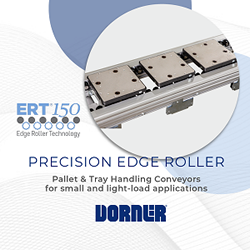WHAT ARE THE PROS AND CONS OF AI ROBOTS?
Artificial intelligence (AI) and mobile robotics have advanced significantly in recent decades and the convergence of both technologies brings surprising results in several areas. Artificial intelligence robots (AI robots) are changing the way we live and work, as well as industrial processes around the world. Robotnik explores the advantages and disadvantages of AI robots. In this article, you can also find 10 examples of applications of these robots deployed in various industries.
🔺Pros of AI robots:
- Precision: they execute tasks with millimeter precision, an aspect of great relevance for sectors such as manufacturing, allowing a significant reduction in the number of errors.
- Increased productivity: By allowing workers to focus on more creative and strategic tasks, AI robots can increase productivity and free up human resources for higher value-added work.
- Safety: They can perform dangerous or tedious work in harsh environments, reducing risks to human workers.
🔺Cons of AI robots:
- Upfront cost: Acquiring and deploying AI robots has a cost that can be an effort, especially for SMEs or industries with tight budgets. Robotnik is working to make access to robotics more and more accessible and to eliminate these barriers to entry as much as possible.
- Job displacement: Intelligent mobile robotics executes certain tasks more efficiently than people, so there is a natural process of work divergence in which humans move on to other types of higher-value tasks.
- Dependency on technology: AI bots are only as effective as their programs and software, making them vulnerable to technical glitches and cyberattacks. For this reason, one of the main focuses of attention of professionals in the sector is to develop systems that are increasingly capable of protecting these devices.
🔴WHAT ARE THE APPLICATIONS OF AI ROBOTS IN VARIOUS INDUSTRIES?
There are available examples of the interesting contribution of robots with Artificial Intelligence in a wide variety of industries, offering innovative solutions to complex problems. Here are 5 examples of AI robots:
🔺Manufacturing Industry:
In manufacturing, AI-powered robots are used for production line automation, product assembly, quality control, and logistics. Their ability to work 24 hours a day without fatigue and with pinpoint accuracy has transformed the way consumer goods are produced.
🔺Healthcare sector:
Have you seen real-life examples of robotic-assisted surgeries? In the same way, in the health sector, they are bringing advances for medical diagnoses and physical therapies. Their precision and ability to work in confined spaces have allowed for more precise and less invasive surgical procedures.
🔺Agriculture:
The RB-VOGUI at Terras Gauda is an example of the application of robotics + AI for precision viticulture, whose objective is to bring together techniques for the cultivation of vines that bring competitiveness to the agri-food sector.
The use of mobile robotics in this area saves inspection, transport and phytosanitary costs, as well as freeing harvesters from some of the heaviest parts of the process.
Automotive:
🔺In the automotive industry, AI-powered robots are particularly well-suited for vehicle manufacturing tasks, from body welding to painting and assembly. This use case describes the intralogistics automation process in an automotive plant with a collaborative AMR from Robotnik.
🔺Services & Hospitality:
There are robots such as PLATO, from United Robotics Group, which have been developed specifically to operate in sectors such as hospitality and customer service in reception, cleaning or food service tasks. These robots, combined with Artificial Intelligence technology, not only reduce labor costs but also improve the customer experience.
Featured Product

The ERT150 - Dorner's Next Evolution of Edge Roller Technology Conveyors
The next evolution in Dorner's Edge Roller Technology conveyor platform, the ERT®150, is ideal for small and light-load assembly automation, as well as medical and medical-device assembly application. The ERT platform is the only pallet conveyor of its kind available with an ISO Standard Class 4 rating for cleanroom applications. Earning the ISO Standard 14644-1 Class 4 rating means Dorner's ERT150 will conform and not contribute to the contamination of cleanrooms to those standards. As implied by its name, the ERT150 (Edge Roller Technology) uses rollers to move pallets through the conveyor smoothly with no friction (a byproduct often seen in belt-driven platforms). The conveyor's open design eliminates concerns of small parts or screws dropping into rollers and causing conveyor damage or jamming. The ERT150 is suited to operate in cleanroom environments requiring a pallet handling conveyor. It is capable of zoning for no or low-back pressure accumulation and is ideal for automation assembly applications within industries including medical devices, electronics, consumer goods among others.
